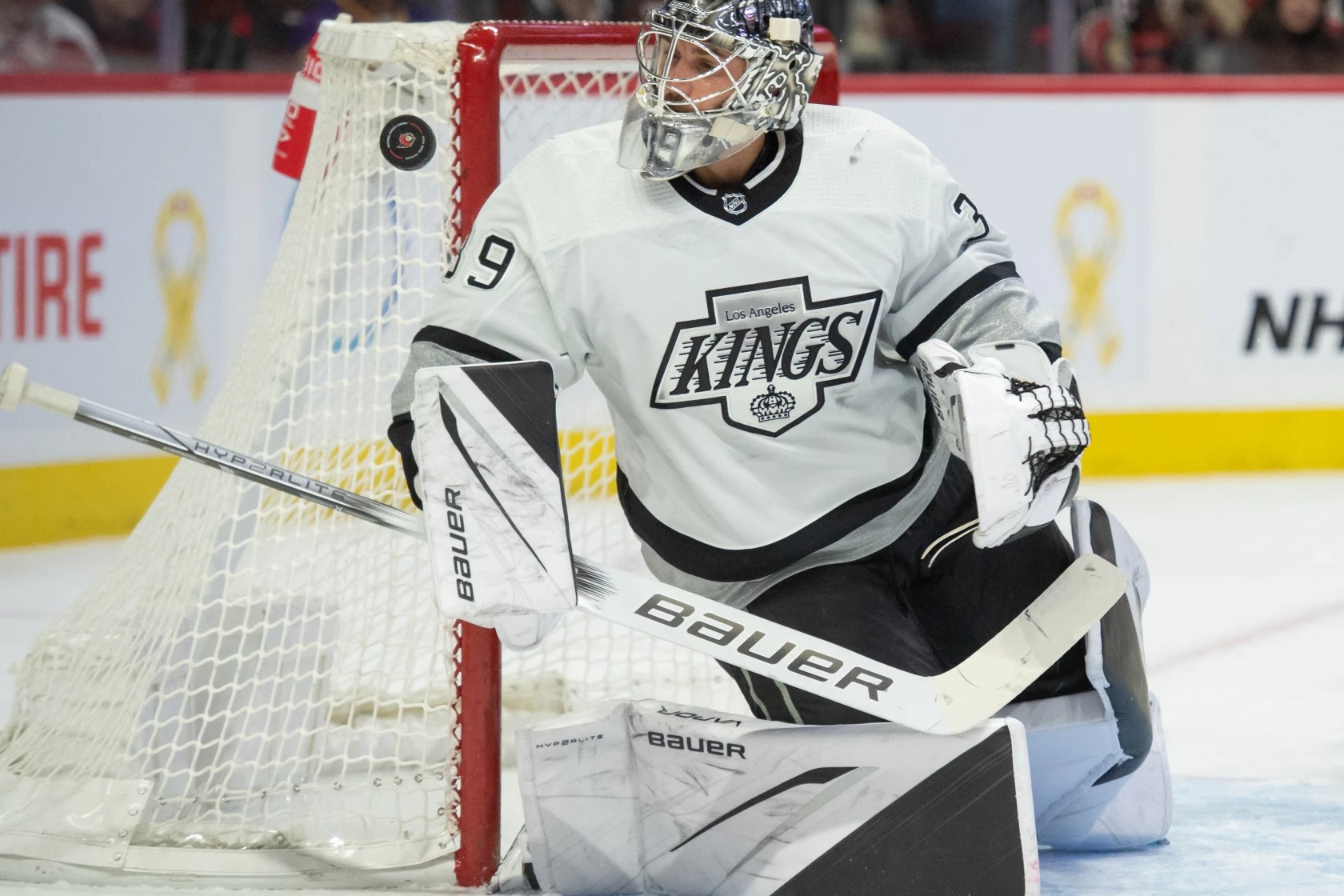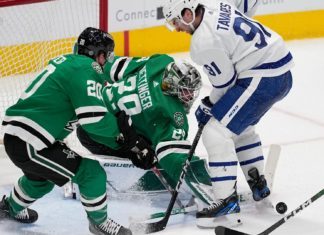The Toronto Maple Leafs have several roster areas to address in what will be a pivotal offseason for the future of the franchise. One is in net, where the team has the inexperienced but promising Joseph Woll on the roster but is looking for a goalie to pair with him.
It does not appear that Ilya Samsonov will return, so the team must look elsewhere to address the problem. GM Brad Treliving could tackle the need in multiple ways, and we will run through the options today before wrapping it all up at the end: the cheap backup UFAs, the lone (non-Samsonov) veteran UFA starter, and the big-name trade targets.
The Cheap Backup Options
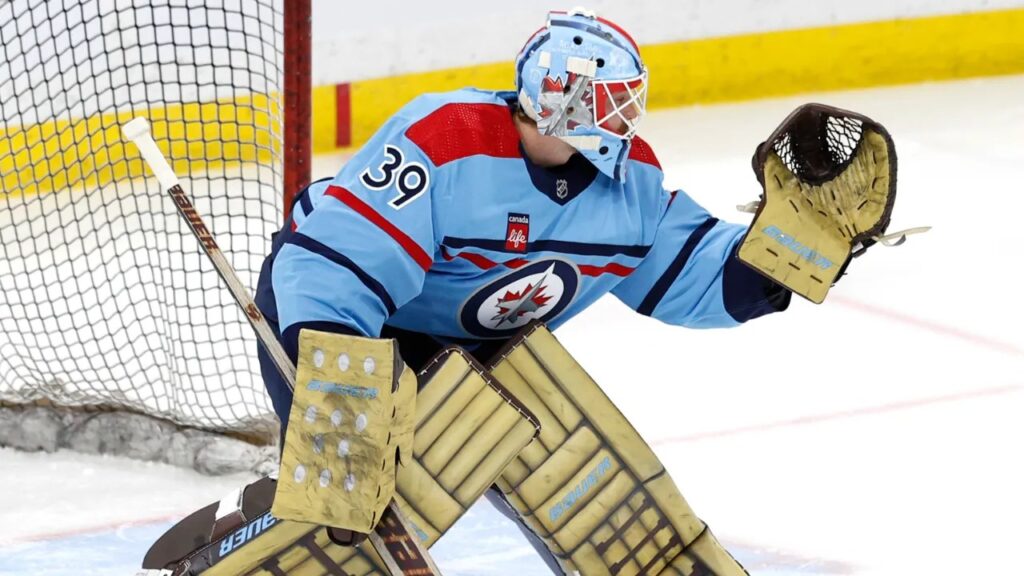
One route to address the goaltending for the Maple Leafs is to place significant faith in Joseph Woll by signing a true backup.

Several players in this category are set to hit the open market, and while they will be signing intending to play larger workloads than they’ve logged so far, their achievements and track record are not indicative of someone who you can really trust to be a starter.
In other words, if you sign one of the goaltenders below, you’re signaling that you want and believe Joseph Woll can be a consistent playoff starter who can win the team the Stanley Cup. It’s risky given Woll’s injury history, but it’s cost- and asset-effective, allowing Brad Treliving to save cash and trade assets on goaltending to more heavily address the forwards and defense positions.
Laurent Brossoit, Winnipeg Jets: Brossoit has never played more than 24 games in a season, but he’s also no spring chicken, having turned 31 in March. He’s spent time primarily with the Edmonton Oilers and Winnipeg Jets, but he had a short tenure in Vegas, which included winning a Stanley Cup in 2023.
Brossoit’s workload reflects the fact that he’s always been a true backup and a good one at that. His career SV% of .911 is above league average for the time he’s been in the NHL, and Evolving Hockey has him down for a career of 26.82 goals saved above expected. That includes an excellent campaign backing up Connor Hellebuyck this past season, with Brossoit posting a sterling .927 SV% and +17.82 GSAx. With what he’s been asked to do in the NHL, he’s done it very well.
The question is whether Brossoit can do more. He wants to do so and will seek a promise from an NHL team that he will receive an opportunity as a 1B tandem goalie rather than a true #2 as he’s been to this point. The question for the Leafs is if they believe his stellar performance can translate when you increase the workload from 20-25 games to, say, 35 games.
I think there is some reason to be skeptical since Brossoit’s assignments have generally been pretty easy. This past season, 14 of his 22 starts were against non-playoff teams and he started twice against Nashville, who were a wild-card squad. Brossoit has largely been playing one game a week against some of the easier teams in the NHL. That’s a very different gig than playing every other night against contending squads, which is what the Leafs may have to ask him to do if Woll is injured again (a legitimate possibility).
Brossoit has shouldered significant work in only one playoff (2023 with Vegas) and posted a .896 in the seven games he started. A leap of faith will certainly be required if the Maple Leafs sign Brossoit, knowing there is a chance that a Woll injury could force him to carry the load.
Anthony Stolarz, Florida Panthers: Sergei Bobrovsky’s backup is probably headed to free agency with young goalie Spencer Knight likely returning to the NHL next season to take Stolarz’s job. Like Brossoit, Stolarz isn’t all that young at 30 years old and has bounced around some.
The last three seasons were split between Florida and previously Anaheim, where he backed up John Gibson. Stolarz has also had quite a bit of success in this limited role, starting roughly 25 games per season the last three seasons with a .915 SV% over that period. Also encouraging: Stolarz has posted a positive goal saved expected in all three seasons, spanning two very different teams between the defensive fortress in Florida and the defensive catastrophe that was the Ducks. He’s shown an ability to be dropped into different environments and succeed as a backup.
However, all of the caveats about Brossoit still apply. Stolarz has never been a starter and has even less playoff experience than Brossoit. As a matter of fact, his only career playoff appearance was last week when he relieved Bobrovsky during the 8-1 Edmonton rout in Game 4. 18 of Stolarz’s 27 games this season were against non-playoff teams, and playing on a good team like Florida, it’s perhaps not surprising that he posted a dominant .925 clip in that workload.
It will be a bit smaller of a step up for Stolarz if he’s asked to get up to 35 games, as he has played 16 more games over the last three years than Brossoit has, but it is still a leap of faith in signing Stolarz for a much larger responsibility.
Scott Wedgewood, Dallas Stars: The theme remains the same for the next few names on this list — career backups who don’t have much starting or tandem experience. Wedgewood was Jake Oettinger’s backup for each of the last three seasons and has performed admirably in that capacity, although this past season was not his finest.
If there’s a plus to Wedgewood compared to Brossoit or Stolarz, it’s that he has appeared in 30+ games twice in his career, both 2023-24 and 2021-22. That requires a bit less projection, although his stats haven’t been as sterling as either of those two. He is also an Ontario native. There could be a desire to come home, and he won’t be expensive to sign. Wedgewood helped a young goalie come into his own in Oettinger and could possibly do the same for Woll.
Casey DeSmith, Vancouver Canucks: DeSmith was a savvy pickup for Vancouver last fall when they unloaded Tanner Pearson. He’s been a very reliable backup who has played roughly 30 games per season over the past five seasons and done so with a .908 save percentage in that span and very solid goals saved above expected numbers. He played a pivotal role for the Canucks when Thatcher Demko got injured in early March, helping the Canucks win the Pacific Division and punch their playoff ticket.
When Demko went down again in the postseason, DeSmith posted a .911 SV% over two games and pitched a shutout in Game 3 against Nashville before getting injured and subsequently Wally Pipp’d by Arturs Šilovs, who stole the show in net. That injury was unusual for DeSmith, who is normally healthy, typically posts a slightly positive GSAx, and usually posts a save percentage in the neighborhood of .910.
DeSmith turns 33 in August, so he will likely come cheap. While he’ll never be a starter, if the Leafs want him to play ~30 solid games, DeSmith can likely provide that.
The veteran free-agent starter

Cam Talbot, Los Angeles Kings: The only goalie of his kind, Talbot is the lone UFA to appear in at least 41 games last season. In theory, this makes Talbot pretty attractive in a market with so many teams starved for goalies, but there are some drawbacks to his profile.
For one, Talbot is about to turn 37 in a couple weeks, which brings with it a whole host of risks. Secondly, he’s a grizzled journeyman with a lot of miles on the tires and a history of up-and-down seasons.
This past year for the LA Kings, Talbot was pretty good in the regular season. The year before on Ottawa, he was much less good. Same story if you jump back five years prior when Talbot produced a marvelous season in Edmonton in 2016-17, playing a ridiculous 73 games with a .919 save percentage on an iffy defensive team only to turn around and post an .892 just two years later. In other words, the consistency has evaded Talbot over his career, with his performance very much coming and going.
On the other hand, Talbot does offer something that Stolarz, Brossoit, DeSmith, and Wedgewood can’t: a starter’s track record. He’s similar to those four in that if Cam Talbot is your playoff starter because Woll is injured, you probably don’t feel great about it. But if Woll goes down for a month in November, there’s a lot more reason to think Talbot can productively hold down the fort, knowing he’s been either a true starter or a 1B tandem goalie in each of the last 10 seasons. He’s been around the block and is used to playing much more often than just once a week against exclusively San Jose and Chicago.
The question, of course, is whether Talbot wants to surrender starter status and join a team with a goalie they would clearly favour in a playoff series. He likely won’t command a big contract since he signed a one-year contract, $1 million with LA last summer, so I think the Leafs could afford him without devoting significant cap space. But if Talbot has the option to start for a team that is willing to offer him a larger role, he may prefer that route.
It’s also worth noting that there is some familiarity between Treliving and Talbot, as Treliving signed Talbot in Calgary back in 2019. He played decently for the Flames for one season before departing to Minnesota in free agency.
The Big Name Trade Options
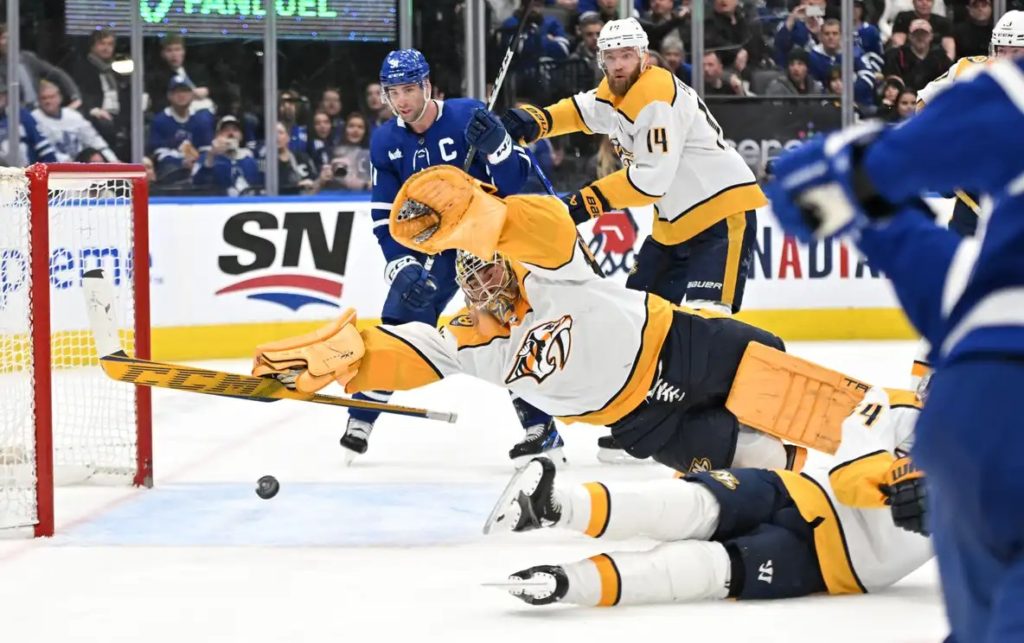
Linus Ullmark, Boston Bruins: We know that the Leafs have been sniffing around starting goalies in the trade market; they made an offer to Calgary for Jacob Markstrom. They didn’t land Markstrom, but with the ex-Flame off the board, the trade market turns to a different Swede, Linus Ullmark.
We should first note that Ullmark’s status as a Boston Bruin may mean that his team isn’t too keen to trade him to a rival squad like the Leafs, although the Ottawa Senators sound interested in Ullmark’s services, so it’s possible that an in-division trade could happen.
Ullmark is obviously a good goalie. The Vezina Trophy winner in 2023 followed it up with another stellar campaign this past season. The emergence of a younger (and better) Jeremy Swayman is leading to Ullmark’s exit in Boston, but he’s a top 10-12 goalie in the NHL as it stands right now. That’s attractive, but there are reasons for concern.
First, Boston is asking a lot and would likely add a tax on trading him in the division. Second, Ullmark has only one year remaining on his contract and may command ~$7 million on his next contract over five or so years.
If the Leafs are going to fork over the resources and cap space to get Ullmark, they must be convinced he is their guy for the long haul. Ullmark turns 31 this summer, so his new deal wouldn’t kick in until age 32, paying him well into his mid-30s. There’s a lot of risk there, especially since Ullmark was merely okay in Buffalo before he got to Boston, a place famous for producing elite goaltending under the tenure of legendary goalie coach Bob Essensa.
How good is Ullmark outside of Boston? Is it a calibre of play for which you’re comfortable paying top dollar? I don’t know if that’s what the Leafs are best set up to chase.
John Gibson, Anaheim Ducks: Gibson’s one-time albatross contract has been thinned to the point that it is now moveable. It has only three years remaining at $6.4 million per season, which is obviously still quite a lot for a goalie who hasn’t been particularly good for five years.
The question with Gibson has always been how much of his decline has been related to the woeful team around him, especially since he often starts seasons strong only to unravel in the second half once the team has cemented itself in the tanking contest yet again. Is Gibson’s iffy play boredom/effort-related, the way Drew Doughty’s was during the Kings’ rebuild? Or are there more serious health/technical issues with Gibson? The Leafs have to figure out that before they even consider acquiring him.
Even then, there are a lot of other issues to ponder. What is the acquisition cost? Anaheim GM Pat Verbeek is a famously tough negotiator, and it seems like the inability to move Gibson indicates Verbeek values Gibson as a positive asset rather than a negative one (which the contract somewhat makes him). Could the Leafs secure retention on Gibson? It would drive the cost up further.
At the end of the day, I think Gibson could again be a very good goalie on a good team, and the Leafs could be the team to make that happen. But cap space is too valuable for the Leafs to consider making such a huge gamble on a goalie like Gibson, and I don’t think paying up with assets to secure extensive retention is worth it on a goalie who, again, might not be any good.
If I were a mid-level team like Detroit looking for goaltending and possessing significant cap space, I would take Gibson with no retention if the cost was cheap. The upside is worth it. But the risk is also so high, and I don’t think a contending team like Toronto should be making that big of a gamble.
Juuse Saros, Nashville Predators: This one doesn’t seem like it’s happening because the Predators seem keen to keep Saros and extend him. It’s a bit odd to me, considering that Saros will likely command a deal even larger than Linus Ullmark’s (Saros is two years younger and has a longer track record), and the Predators have an elite goalie prospect waiting in the wings in Yaroslav Askarov, but the Preds seem to want to keep Saros. That said, there remains the possibility they could change their mind about keeping Saros and use him as a trade chip to acquire something they really need, like, say, a star forward (you know, like Mitch Marner).
I don’t think Marner is getting traded to Nashville for Saros++ necessarily, but let’s imagine he was and consider Saros for a moment. He’s been an elite goalie nearly every year since taking over in Nashville’s net for Pekka Rinne… except for this past season. After finishing in the top six for the Vezina three consecutive seasons, Saros slumped to a .906 in the regular season and a .900 in the playoffs — fine, but not his usual standard.
Saros plays a true starter’s workload — 64+ games in three straight seasons — which would probably complicate the picture with Joseph Woll, but when Saros is on, he’s one of the very best in the league. Undersized but freakishly athletic, it’s hard to disparage what Saros has been able to accomplish as an NHL starter. He’d probably be the best Leafs goalie since Curtis Joseph.
It’s not without risk, as this past season shows. If Saros is the same goalie he was in 2023-24 for the rest of his career, trading Mitch Marner for him and paying Saros $8-9 million annually to receive that production level would be nothing short of disastrous. That’s the problem with surrendering premium assets for a position as erratic as goaltending.
Saros’ new deal wouldn’t start until he’s age 30, and you never know how a goalie will age with health and other factors. Ultimately, I would not want to trade a 27-year-old star forward for an ostensibly star goalie in his 30s. One has a much safer projection than the other, and the level of play Saros would need to post is so high to justify the acquisition price, although he has played at that level before. Brad Treliving would be gambling his entire job on it if he went this route.
The Last Word
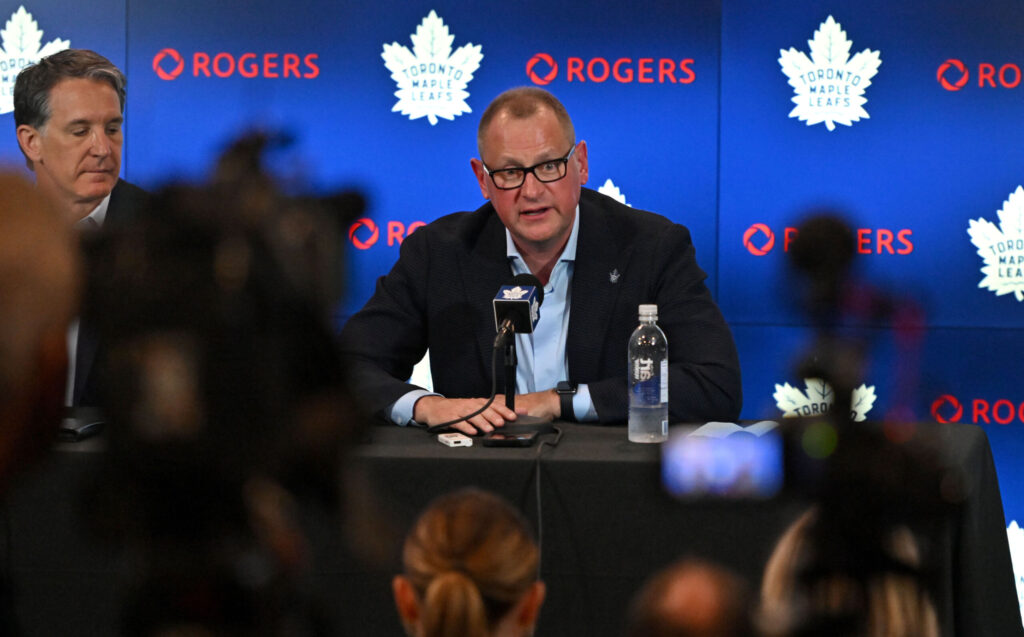
After surveying all of the above options, what is the best route for the Leafs to take?
Personally, I would look to pair Woll with one of the cheaper UFA options, ideally signed on a one-year, prove-it contract. My first choice would be Talbot, but if he is not interested in signing to be a 1B to Woll, I would pivot to Wedgewood, Stolarz, DeSmith, and Brossoit, in that order. I believe Woll can be a very good NHL goaltender because he’s shown that consistently whenever he has played. He has also shown no indication in his career that he can be a reliable starting goalie because of his health. The Leafs will hope that potential tweaks to Woll’s training regimen could improve his durability, but they shouldn’t count on him starting more than 40 games. It would be a pleasant surprise if he does, but it’s not one they can bank on at this stage.
Thus, I prefer to find a goalie who can shoulder at least 40 games without sinking the team’s fortunes. In theory, that would shift you toward one of the big names like Ullmark or Gibson, but the flip side of my skepticism of Woll is my belief he could be excellent if he does figure out his health situation. It’s easy to imagine a scenario where the Leafs shell out for a big name goalie just to see Woll finally get his act together and outplay the goalie that Toronto traded for.
Moreover, the concern of assets has to be taken into account. Cap space is ever valuable, and the Leafs are limited in their draft capital. How many big-time trades can they realistically make over the next few years with the number of picks they’ve already traded? Possibly only one, and I don’t love the idea of blowing what few picks they still have on a goaltender — especially not when they could have a great one already on the roster.
Slicing it in between and looking for a steady backup, albeit one who can step up if needed, is the happy middle ground. Make 2024-25 Woll’s official tryout, and if he doesn’t stay healthy again or fails to click on ice in a larger workload, make a bigger move next summer when the Tavares and Marner deals are off the books and the Leafs have vastly more cap space to work with.
This past season, the Leafs started nearly 3/4 of their games with either Ilya Samsonov or Martin Jones in net, who posted an .890 and .902 SV%, respectively. The Leafs went 34-15-9 in those games and comfortably made the playoffs. They don’t need elite goaltending in the regular season, and if they’re betting on Woll in the playoffs, signing someone who can be roughly league average in 30-40 games is all they really need.
I feel good about Cam Talbot providing that. I think Scott Wedgewood could, and I am reassured by Anthony Stolarz’s performance in Anaheim enough to make me think he could, too. I am more worried about Laurent Brossoit, given how little he has played. It’s hard not to think of the last seldom-used Winnipeg backup who flashed in brief work and wanted a larger role. It turned out that in a larger role, said goalie was not of even NHL calibre (Eric Comrie). That’s the one scenario I want to avoid, so picking someone with a longer track record of starting more than just a few games behind an elite goalie is what I would target.
That’s the group of players I’ve outlined in this piece, but for some, there will still be a desire to go after a marquee goalie. The risks there are much higher, but as is always the case with the sport’s most important position, if it hits, you’re golden. Goaltending often haunted Brad Treliving in Calgary before he signed Jacob Markstrom, so it wouldn’t shock me if he did take a big swing on an Ullmark or a Gibson. But it’s more likely that Treliving believes Woll could be that guy — today’s report from Kevin Weekes of a possible three-year contract extension on July 1 certainly indicates as much — and saves himself some money to spend on the blue line. Only time will tell, and it’s certainly not out of the question that the Leafs could find themselves hunting for a goalie again at the trade deadline.















![John Gruden after the Leafs prospects’ 4-1 win over Montreal: “[Vyacheslav Peksa] looked really comfortable in the net… We wouldn’t have won without him” John Gruden, head coach of the Toronto Marlies](https://mapleleafshotstove.com/wp-content/uploads/2025/09/gruden-post-game-sep-14-218x150.jpg)








